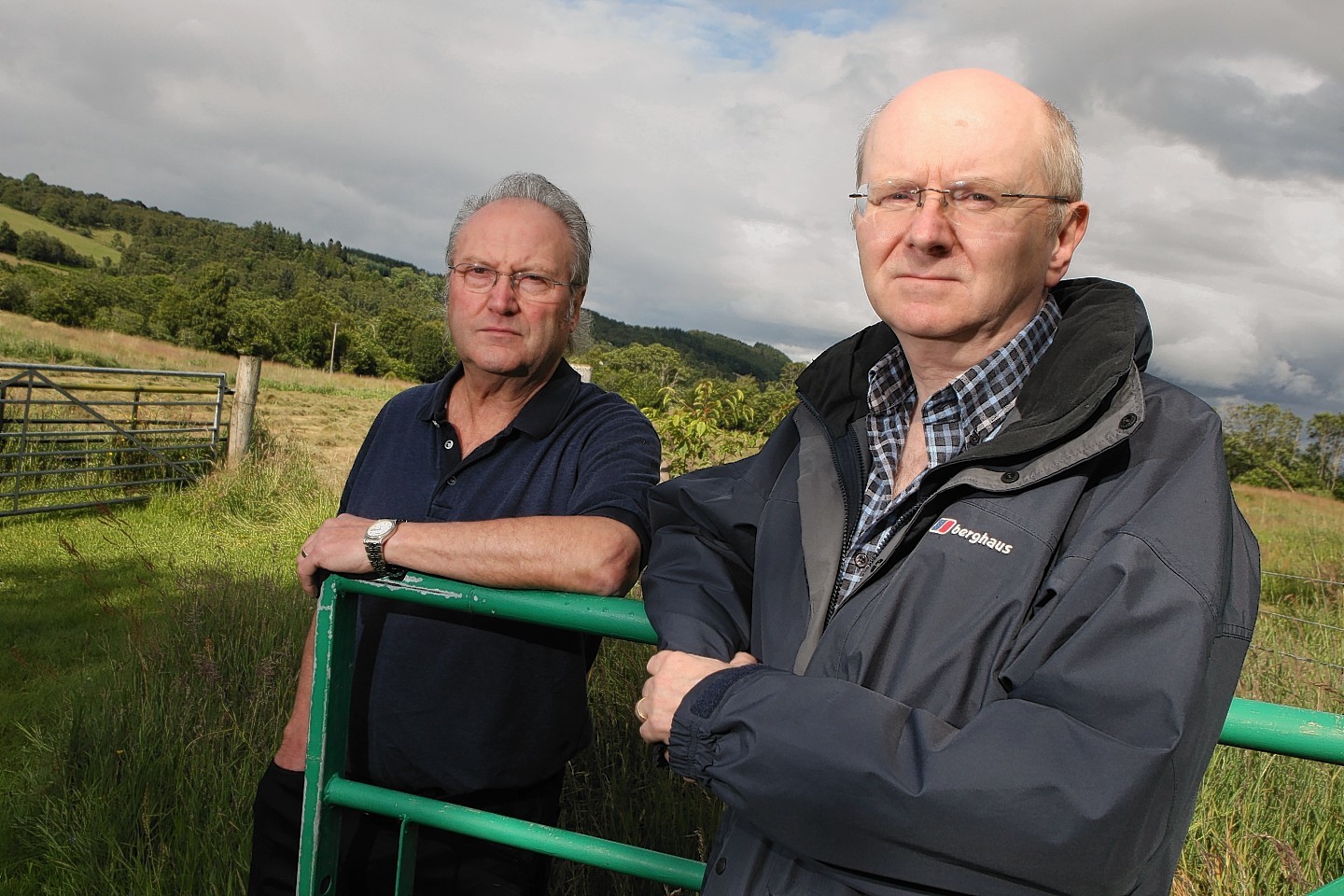Campaigners have carried out a new survey which they claim shows visitors are turning away from the Highlands because of the growing number of in the region.
New research by an anti-turbines group in the Great Glen has found that tourists feel the devices make the north less attractive.
Now the group – Stop Turbines At Glenurquhart (Stag) – has urged VisitScotland to renew its own research into attitudes to windfarms, claiming the agency’s data is outdated.
Yesterday, the tourism group, which last carried out a survey in 2011, said it was planning to commission new research.
Stag was set up by opponents of the Cnoc an Eas windfarm, planned near Loch Meikle in the Great Glen.
Force 9 Energy, working with French firm EDF Energy Renewables, hopes to build 13 turbines up to 448ft tall within sight of nearby homes.
Stag treasurer Cliff Green said group members were angry that Force 9 Energy referred to the VisitScotland research and a YouGov poll to support its application.
Stag has also created new coloured maps to show the growth of windfarm developments in the Loch Ness area over the past decade.
Mr Green said: “It is outrageous that the decision-makers are considering this application without updated information and when tourism is so important to the Highlands.
“We are no expert pollsters but this confirms a rising trend in objections that follows the survey by the Mountaineering Council of Scotland (MCoS) in 2014.
“We would like to see a professional body follow up the survey by VisitScotland in 2011.”
Campaigner Lyndsey Ward said: “These maps and tourism survey results make an absolute nonsense of Force Energy’s claims that tourism will not be affected by the Cnoc an Eas windfarm.
“It suits their purpose to use reports and studies from years ago when turbines were only proposed in much smaller numbers.
“The truth of the matter is that the 600-plus turbines proposed today will have a devastating effect on the local tourism industry.”
Last month, VisitScotland’s chairman Mike Cantlay said it would be an advantage to have an updated survey.
A spokeswoman for the body said: “VisitScotland supports the drive for renewable energy and recognises the potential of Scotland’s vast resource.
“It is well documented that the vast majority of potential visitors would not be discouraged from visiting Scotland on account of windfarm developments.
“Windfarms and other renewable energy projects are a part of the landscape in nearly every destination in the world.
“As with any development which could impact on the natural landscape, such projects should be sensitive to their surroundings and involve a full consultation with all interested parties.
“As the national tourism organisation, VisitScotland is planning to commission new research into this.”
Stephanie Clark, policy manager for industry group Scottish Renewables, said: “An independent YouGov poll published in March of 1,000 respondents in Scotland confirmed 71% supported the continued development of wind power as part of our overall energy mix.
“In 2013 a similar YouGov poll found more than two-thirds (69%) said their decision to visit an area of Scotland would not be affected by the presence of a windfarm.
“We welcome continued discussion about Scotland’s energy mix and how renewables can play its part but we must also ensure that this is underpinned by independent, robust and well-evidenced research.”
Andrew Smith, of Force 9 Energy said: “It’s hard to give any credence to the results of a survey which contains loaded questions, which has been hosted on an anti-windfarm campaign website and was promoted solely by anti-windfarm campaigners.
“Previous independent research on windfarm impacts on tourism, using methodology which avoids bias in both the questions and the sample selection shows that windfarms do not adversely affect the Scottish tourist industry.”
A spokesman for the Scottish Government said: “The latest international visitor numbers suggest windfarms and a successful tourism industry can co-exist and flourish together, in a sustainable way.
“Our policy on onshore windfarms aims to strike a careful balance between utilising Scotland’s significant renewable energy resources whilst protecting our finest scenic landscapes and natural heritage.
“That includes planning policy which makes clear that windfarms are not appropriate in National Parks or National Scenic Areas, which cover a fifth of Scotland.
“It also strengthens protection for wild land areas outwith National Parks and National Scenic Areas which cover a further tenth of the country.”
